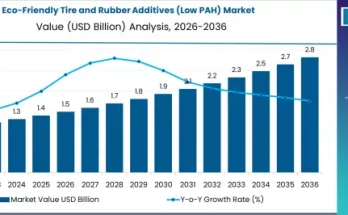Evolving culture of the motorcycle industry, along with interest of riders in framing their unique identity, has led the modification trend, wherein aftermarket-produced motorcycle accessories are increasingly sought-after. Modifications in motorcycles range from moderate to extreme, with typical modifications involving frames & fittings, electrical & electronics, and handle accessories.
The motorcycle accessories market will record an above-average 4.6% volume CAGR during the forecast period, 2018 to 2026, according to a recently published Fact.MR report. Proliferation of aftermarket products is considered to be a boon for growth of the motorcycle accessories market, despites its consequential complexities for manufacturers, suppliers, and owners alike.
Varied approaches of OEMs with regard to installation of aftermarket motorcycle accessories, has been discouraging growth of the latter. However, key established players such as BMW Motorad and Harley Davidson have designed their motorcycles to uphold the culture of custom products by collaborating with aftermarket motorcycle accessories manufacturers.
Sensing the dynamically changing trends in the motorcycle accessories market, leading stakeholders continuously focus on developments in sought-after products, such as crash protection, lighting, and horns. The study projects revenues from crash protection to be over 1.5 times of lightings. High demand for crash protection motorcycle accessories rides the coattails of government and manufacturers’ efforts to curtail incidence of on-road collisions, wherein motorcyclists are at a relatively greater risk.
Every 8 in 10 motorcycle accessories are sold to conventional motorcycle owners. With cost being the primary concern among consumers worldwide, particularly in developing nations, purchases of cruiser and sports motorcycle accessories are confined to affluent consumers. Conventional motorcycle owners are therefore the target consumer base for manufacturers of motorcycle accessories as well as motorcycles alike.
Sales of motorcycle accessories for conventional motorcycles will exceed 400,000 thousand units in 2018.
This number will remain substantially higher than sales for cruiser, sports, and off-road motorcycles combined.
Female Riders to Aid Transformation in Motorcycle Industry, Thereby Augmenting Demand for Motorcycle Accessories
Female riders are aiding transformation of the motorcycle industry, and women ridership is on the rise despite decline in the traditional motorcycle brands. In the U.S. alone motorcycle registrations closed in on 8.4 million in 2017, and many of the registrations belonged to women, according to Motorcycle Industry Council. The rise in female riders have paved lucrative avenues for stakeholders in the motorcycle accessories market, in terms of design and innovation.
India is envisioned to outgrow China in the motorcycle accessories market, with 1% difference in CAGR through 2026. Growth in India is underpinned primarily by availability of facilitated vehicle finance options and foray of fuel-efficient motorcycles. Gradual decline in motorcycle sales in China against the backdrop of curbs on petrol-based motorcycles, has led the country to witness a shift from its pervasive dominance to the second place, following India. However, difference between revenue shares of India and China will remain insignificant, according to the study.
Intense and increasing competition has prevailed as a common scenario observed among sales channels in the motorcycle accessories in recent years. Competitive pressure between specialized, independent and online stores have further been aggravated, wherein independent stores currently account for leading shares in the motorcycle accessories market.
However, online retail stores, such as Amazon, have extended their product ranges for including both new and used accessories, while pricing them lower than independent and specialized retailers.
The study projects online sales of motorcycle accessories to grow relative faster at over 5% CAGR through 2028. As ecommerce growth proliferation has encouraged shift in consumer buying preferences toward online platforms, significant decrease in foot traffic for specialized and independent outlets is envisioned by the study. This will further exacerbate competitive scenario between sales platforms in the motorcycle accessories market.


